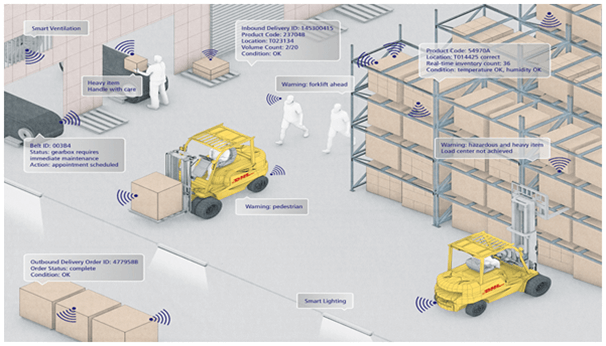The healthcare industry is faced with challenges such as high inflation in healthcare costs as well as time and resources wasted when supplying the required items. These problems have placed great pressures on the healthcare providers who depend on the efficiency of procurement processes. The healthcare procurement management affects several aspects of organizational performance. With efficient decision making techniques, the healthcare system will be able to provide an efficient management of procurement affairs. This article discusses the best practices for procurement management in the healthcare industry, and dwells on the optimization approaches, which have been used to cope with the problems in healthcare procurement.
Table of Contents
Procurement Unique to Healthcare
Healthcare procurement manages the buying of most of the services, equipment and supplies. The healthcare sector thrives to give emergency care for individuals in need, for unexpected medical care. Healthcare procurement management especially that in hospitals is crucial because it controls the purchase of the bulk of services, equipment and supplies, it manages supply cost as a percentage of spend, it oversees total lifecycle management, it brings tangible results and lastly its data analysis makes objective decisions. As a result, hospital procurement has been given organizational hierarchy status. Data analytics provides real-time information that can help healthcare decision making and improve the effectiveness of the supply chain.

Well Defined Processes
In order to prevent overreliance on technological support, training practitioners is vital before investing heavily in technology. Reports are futile when no one knows the reason why they are done as too much time is wasted due to poor communication of stakeholders’ needs. An effective procurement process consists of detailed knowledge of the needs of all units in the healthcare sector, recognizing the correct supplier to achieve those needs, occasionally assessing supplier performance and arranging agreements that give greatest value at lowest costs. These processes ensure that the tasks are carried out smoothly and quickly. Predictive analytics give a forecast of future outcome based on past patterns instead of regurgitating information about past events to a user. More informed choices about how to proceed with a decision for better patient care can be made as clinicians, financial experts, and administrative staff in a hospital receive alerts about potential events before they happen.
Practice Process Transparency
The benefits of transparency include faster processing, since everyone knows what is to be done and the rules, they must follow thus preventing congestion in the production system. Cost is also reduced as stakeholders know what needs to be done and when. Accountability is ensured as both company and vendors do not hide any vital information from each other. Digitalization of the procurement process increases teamwork, analytics and involvement with the use of devices along the whole procurement value chain thereby, increasing speed efficiency. Spend analysis controls expenses while faster orders speed up the buying process. Leverage technology reduces unnecessary paper work with cloud-based document management. The use of technology reduces human error in invoice evaluation and payment, thus, increasing the transparency of the entire process.
Contracts And Documentation Hub
The possession of all important information in an attainable place ensures, stability of contracts and communications, lesser mistakes, less time squandered improving shoddy work as well as the use of a management software such as Google Docs. The benefits of a contracts and documentation hub in the healthcare sector are abundant. A centralized hub will prevent the wastage of money because there are numerous benefits consisting of audit history, central repository, automated alerting, workflow automation, version history, security control and process scalability. This centralization is vital for overseeing third-party vendor contracts that exist across the healthcare departments as well as a clear view of the entire contract lifecycle to save costs.

Inventory Optimization
Inventory optimization puts the correct products in the correct venue at the correct time. The healthcare industry is facing great supply chain challenges with commercial, operational, and stringent regulatory factors giving rise to a unique production environment. These include the need to provide very high service levels, the tracking and tracing of goods to prevent errors and counterfeit goods. The knowledge of these inventory optimization technologies is potent in helping companies to manage stock and deliver them to customers while maintaining costs. The healthcare industry will greatly benefit from these inventory optimization technologies: Warehouse Management System, Radio-Frequency Identification system, Automation Technology, Automated Storage and Retrieval Systems, The Future of Warehouse Technology, to minimize error for the wrong shipment as time is saved in having to do unnecessary remedial work.

Building Strong Supplier Relationships
Suppliers should not be neglected as they are crucial in the retail operation. Strive to find the best vendors in the healthcare industry, think of suppliers as partners instead of just mere vendors, talk to them even when you do not need to negotiate, invest in product forecasting and share forecasts with them. Once an agreement has been made, maintain a healthy relationship through communication by being honest, prompt and thorough, be professional by being an excellent client who uses the right communication tools such as social media, emails and teleconferencing. All of these points as well as good old-fashioned niceness will strengthen supplier relationship.
Seeking Alternative Solutions
The healthcare industry’s top procurement teams need to use leverage innovative tools to work with suppliers and stakeholders to identify strategic initiatives within the company and create appropriate KPIs that encapsulate the function’s influence on the healthcare sector’s priorities, apart from usual cost savings. By associating themselves early on in a sourcing and procurement process, proactively engaging stake holders and aligning solutions according to the department’s requirements, the function will be more successful in delivering quality healthcare products and medical services thereby increasing the scope of support to patients and the public.
Communication is vital. There should be a clear path and order when communicating approvals. Being unaware of this order of hierarchy leads to time wastage and redundant work.

Conclusion
If healthcare procurement is done well, it can dramatically improve the bottom line each time. Every dollar saved during the discussions with suppliers benefits For-Profit hospitals or can be reinvested in Not-For-Profit hospitals. It improves working capital thus making the accounts look promising. Suppliers in the healthcare sector should be informed that today’s procurement professionals are all-rounders who come from all walks of life. They are well-informed, highly trained and well-equipped with knowledge in healthcare as well as other sectors. This promotes new ideas and approaches which help to catapult the healthcare sector to greater success.
References
Francesca Nicasio. (2021). “How to Build a Strong Relationship with Suppliers”. Retrieved from https://www.vendhq.com/blog/supplier-relationship-management/, accessed 12/09/2021.
Jolynn Chong Chew Lan, GDSCM. (2020). “Big Data Analytics for the Healthcare Supply Chain”. Retrieved from SIPMM: https://publication.sipmm.edu.sg/big-data-analytics-healthcare-supply-chain/, accessed 20/09/2021.
Tom Saine & Tom Williams. (2015). “Why Hospital Procurement Matters!”. Retrieved from https://strategicdynamicsfirm.com/why-hospital-procurement-matters/, accessed 12/09/2021
Lim Wei Jian, DLSM. (2021). “Inventory Optimisation for the Life Sciences Sector”. Retrieved from SIPMM: https://publication.sipmm.edu.sg/inventory-optimisation-life-sciences-sector/, accessed 17/09/2021.
Mohammad Naeem, ADLSM. (2019). “Lean Six Sigma Best Practices for Effective Supply Chain”. Retrieved from SIPMM: https://publication.sipmm.edu.sg/lean-six-sigma-best-practices-effective-supply-chain/, accessed 12/09/2021.
SpendEdge. (2020). “5 Pro Tips for an Impactful Procurement Process”. Retrieved from https://www.spendedge.com/blogs/5-pro-tips-for-an-impactful-procurement-process, accessed 12/09/2021.

